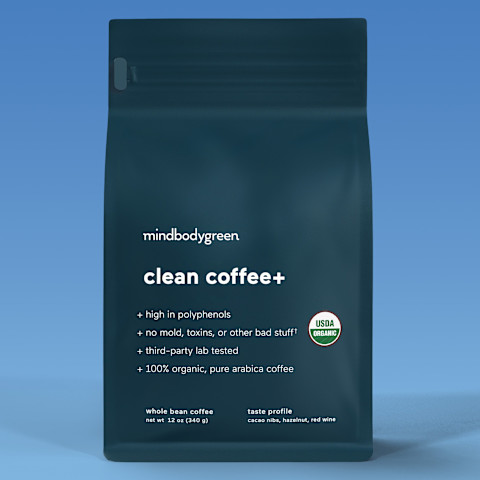If You Love Coffee, Don’t Skip These Dentist-Approved Teeth Brightening Hacks

If you’re a daily coffee drinker, you probably already know the tradeoff: your beloved morning ritual can leave behind some not-so-beloved stains. But there’s no need to worry.
Functional and pediatric dentist Staci Whitman, DMD, explained on the mindbodygreen podcast that there are simple, science-backed ways to brighten teeth without causing damage—so you can enjoy your coffee without compromising your smile.
Why your coffee habit doesn’t have to ruin your smile
First, let’s talk about what’s actually happening when your teeth stain. According to Whitman, coffee stains are typically extrinsic, meaning they sit on the surface of your enamel rather than deep inside the tooth. This is why professional cleanings (or even just polishing at the dentist) can remove much of the discoloration.
Still, prevention goes a long way. Whitman recommends a simple hack: sip water in between sips of coffee. This helps wash away pigments before they sit too long on the enamel.
Another easy upgrade? An electric toothbrush. Its consistent, gentle vibrations remove more plaque and surface stains than a manual brush, helping to preserve your teeth’s natural brightness over time. Paired with your morning coffee and a little water, it’s a simple step that makes a noticeable difference.
Dentist–approved ways to brighten your teeth
Here are Whitman’s top evidence-based strategies for a whiter smile, without wrecking your enamel or disrupting your oral microbiome.
Try nano-hydroxyapatite toothpaste
If you haven’t heard of nano-hydroxyapatite (n-Ha), it’s worth adding to your routine. Originally developed by NASA, this mineral compound actually fills in microscopic pores on the surface of teeth. By smoothing out the enamel, it changes how light reflects, creating a naturally brighter appearance.
Use baking soda sparingly
Baking soda has long been a DIY staple for brightening teeth, and for good reason. Its mild abrasiveness helps lift surface stains and neutralize acids in the mouth, making it effective for occasional whitening.
Whitman recommends mixing a small amount with water and brushing lightly once in a while. Just be careful not to overdo it: used too frequently, baking soda can wear down enamel over time. Think of it as a once-in-a-while tool for stain removal, not an everyday substitute for toothpaste.
Rethink hydrogen peroxide
While hydrogen peroxide is common in whitening kits, Whitman cautions against overdoing it. “Every time you bleach, you could be damaging the nerve of your teeth,” she explained. Overuse can also disturb your oral microbiome and cause lasting sensitivity. If you do use it, stick to diluted solutions and occasional applications.
Book polishing-only cleanings
You don’t always need a full dental visit to refresh your smile. Whitman says you can ask your dentist for a quick polish, which removes surface stains without the intensity of a deep cleaning. This can be especially helpful for coffee and tea drinkers.
Choose cleaner whitening strips—if you use them
There are now gentler whitening products on the market, which use herbs and essential oils instead of harsh bleaching agents. These won’t give you the blinding “Hollywood smile,” but they can subtly brighten without the long-term drawbacks of aggressive whitening.
Redefining “white teeth”
One of Whitman’s most important reminders is that much of what we see online is filtered, bleached, or covered with veneers. “Unfortunately, we are inundated with filtered photos and unrealistic aesthetic standards,” she says.
That means no at-home product will give you the level of brightness seen in heavily edited images. And even when people pursue high-octane bleaching, they often trade short-term brightness for long-term sensitivity—or worse, root canals.
The takeaway
Your smile doesn’t need to match an Instagram filter to be healthy—or beautiful. Functional approaches like sipping water with coffee, brushing with nano-hydroxyapatite, and getting occasional professional polishings can help keep your teeth naturally bright without harming your enamel or microbiome.
At the end of the day, the goal isn’t “perfect white” teeth—it’s strong, healthy teeth that reflect the bigger picture of your oral and overall health.

